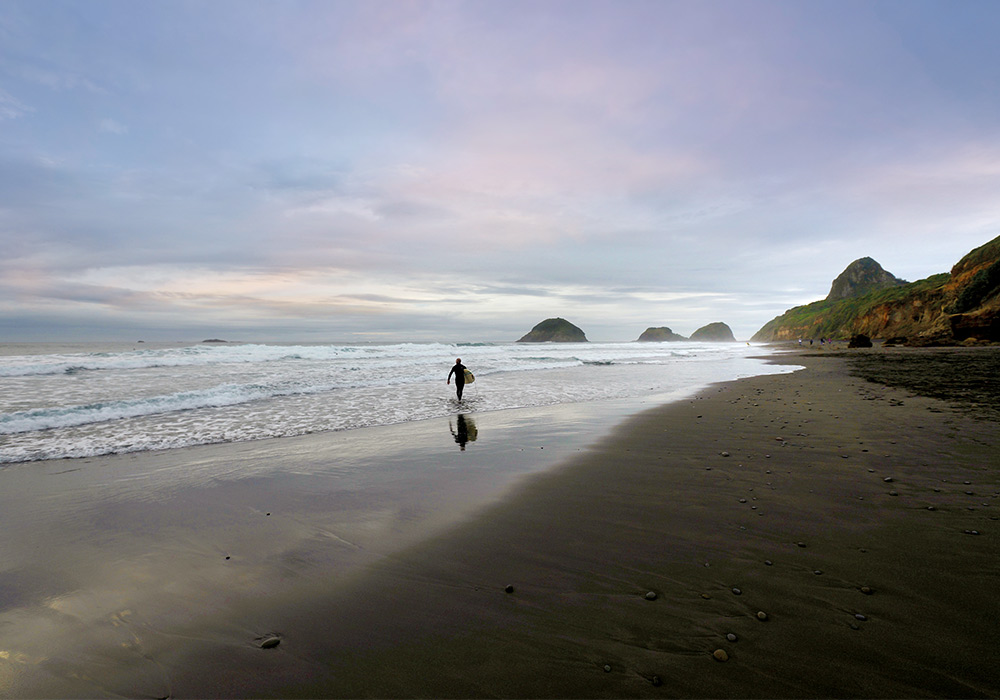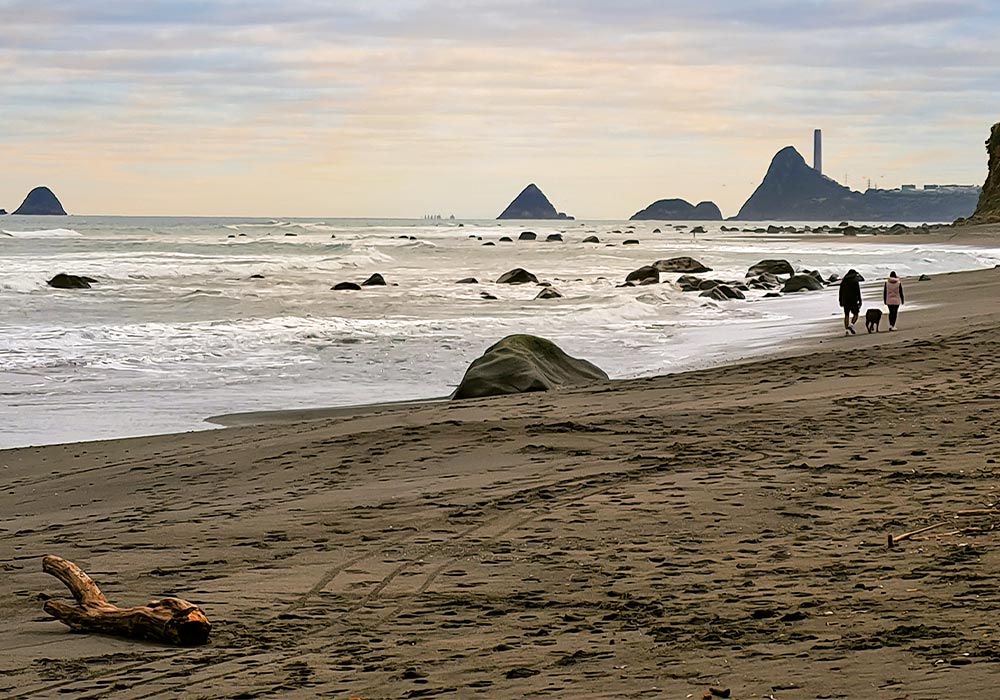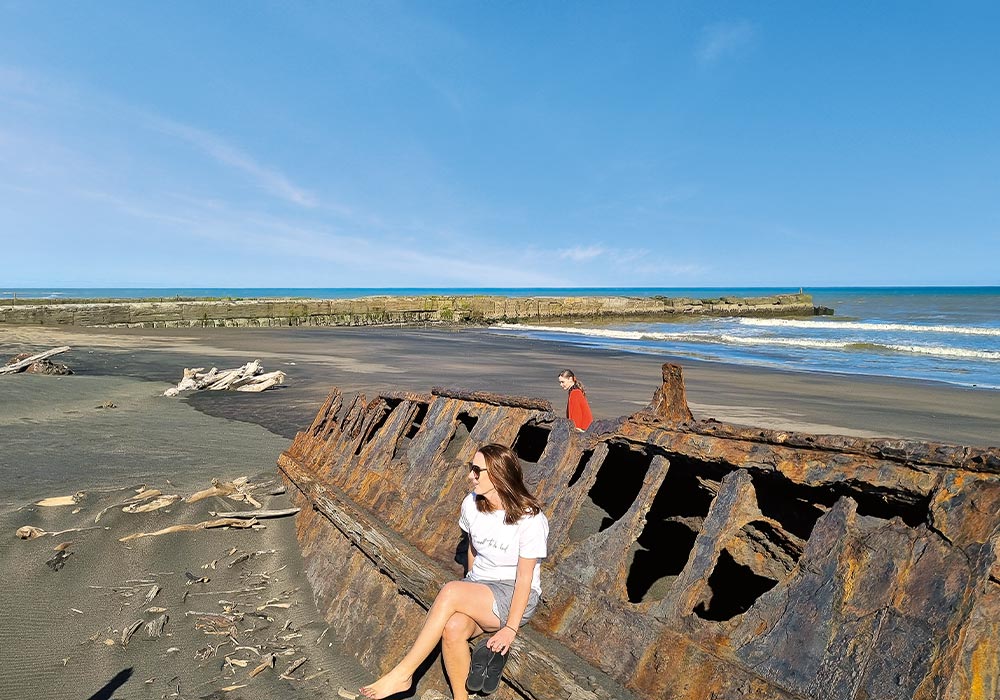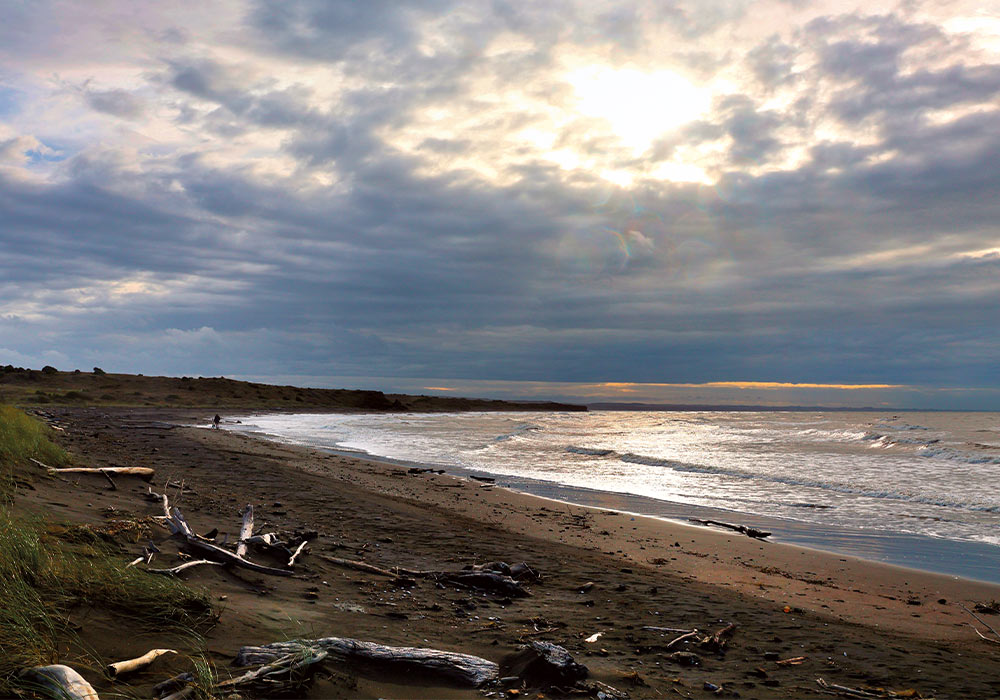The Taranaki coastline can be wild and dangerous, but it’s also beautiful and blessed with great beaches. Wendy Montrose shares her favourites and recommends visitors spend a little extra time in the region.
1. Tongaporutu Beach
For sheer drama and beauty, you can’t beat Tongaporutu Beach, so if you’re heading to the region from the north, take a breather. Look for the sign on SH3 after Mokau, the turn off is just south of the Tongaporutu River bridge. It’s about a 20-minute walk from the car park beside the river to the beach where the north Taranaki coastline is ever-changing, constantly sculpted by the Tasman Sea into sea stacks, caves, and arches. The Three Sisters formation has to be seen to be believed so don’t forget your camera. Check the tide, as it’s only safe at low tide and make sure you allow enough time for the return walk. As a bonus, freedom camping is allowed at the car park.
2. Fitzroy Beach

New Plymouth’s most popular bathing beach, Fitzroy Beach is great for swimming and surfing. Fitzroy Surf Lifesaving Club patrol the beach during weekends in the summer months and the Beach Kiosk is open year-round from the Surf Club selling coffee, milkshakes, cabinet food, and fish ‘n’ chips. If you’re staying at Fitzroy Beach Holiday Park, it’s just a skip across the walkway to the surf.
3. Ngāmotu Beach
As late as 1820, Māori at Ngāmotu had not seen Pākehā, isolated as they were by the rolling surf that crashed onto the beach. Now protected by Port Taranaki’s breakwaters, Ngāmotu Beach is a family-friendly swimming and water sports beach. When the wind picks up, watch the windsurfers get up on their foils. Every first and third Sunday of the month, the Seaside Market pops up on the beach with more than 70 stalls selling local arts and crafts, food, clothing, and jewellery; a must-visit when in New Plymouth.
4. Back Beach

Five minutes west of downtown New Plymouth, Back Beach is the perfect place to catch a sunset. Take your binoculars. At the northern end of Tapuae Marine Reserve, the beach is near enough to the Sugar Loaf islands to give you a peep at the seals and 19 species of seabirds returning to roost at the end of the day. It’s a popular swimming beach over the summer months and used by surfers
year-round.
5. Oakura Beach

About 20 minutes drive out of New Plymouth on the Surf Highway, Oakura is the first beach to stop at. The western end is popular for swimming, surfing, and kayaking and a coastal walk takes you to the rusted skeleton of the SS Gairloch that ran aground in a storm in 1903. For beachfront camping, stay at the Oakura Beach Holiday Park.
6. Opunake Beach

This is a local secret we stumbled upon by chance and will definitely return to. Calmer than you’d expect for a West Coast beach, it’s a favourite for families with surf lifeguards patrolling at busy times over summer. There’s plenty of parking and right across the road is Opunake Beach campground. A fantastic place to enjoy local fish and chips and a stunning sunset.
7. Mana Bay, Pātea

The sand seems to get darker the further south you go and at Mana Bay, it’s fine, soft, and black. Partly submerged in the powdery stuff is the rusting wreck of SS Waitangi that sank after hitting the breakwater in 1923. The beach stretches for miles with high cliffs providing an excellent lookout spot. The old wharf is interesting, and there’s a great view of Waipipi Wind Farm down the coast. Mana Bay offers easy parking and a few spots for freedom camping.
8. Waiinu Beach

Time is never wasted when chatting to locals. At Pātea, we met a couple who recommended another South Taranaki gem, Waiinu Beach. Turn off SH3 at Waitōtara, and it’s only eight kilometres to the beach and a delightful campground run by South Taranaki District Council. Waiinu means ‘fresh spring water’ and is named for the many springs along the beach. A storm blew in while we were there, whipping the sea up, but we found shelter at the camp behind the dunes. It’s an interesting beach even when you can’t swim. Walk north and you’ll find ventifacts – stones fashioned into highly-polished conical shapes by wind-driven sand.






